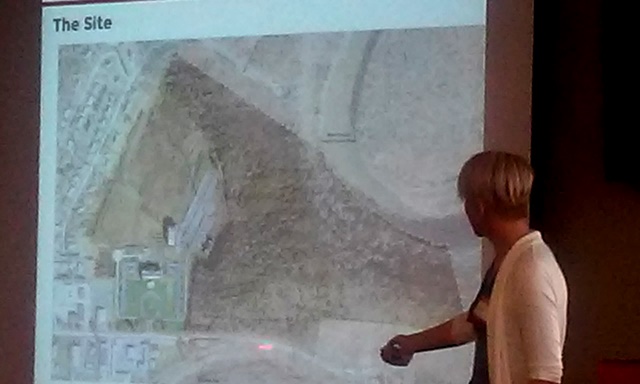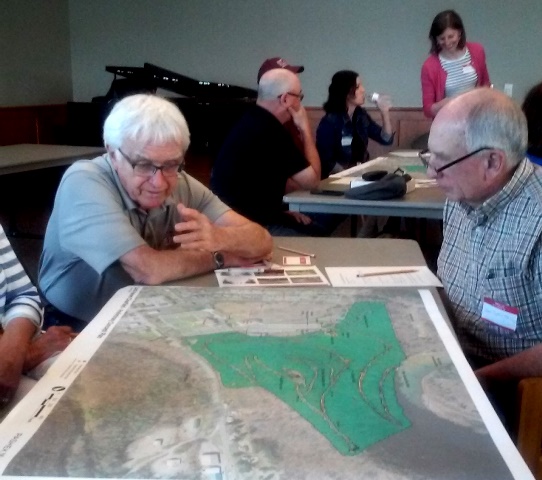
CLEARFIELD – Officials at Lock Haven University’s Clearfield campus are looking for ways to bring the community and students closer together while also utilizing nearly 100 acres of land available to the campus.
There are many things being looked at, and last night at a public meeting, the architects involved presented some preliminary ideas and looked for community input.
Campus Director Dr. Bill Curley explained that university officials have looked at the property and wondered how they could better use it and talked to some people. They were advised to create a master site development plan and take it from there.
Officials then applied for funding from the state Department of Conservation and Natural Resources for grant money, and the Department of Community and Economic Development for the matching funds, then hired Pashek MTR of Pittsburgh.
Sara Thompson from Pashek MTR gave a brief PowerPoint presentation on some of what is being considered. She said a steering committee of community members is helping with the planning.
The site plan begins with an analysis of the site and facilities, input from the public and community priorities, a design cost estimate, determining maintenance and operations costs and finally a phasing plan and site development.
Some of the community goals outlined by the committee include having a variety of trail options, providing educational and learning opportunities for all ages, providing not only access to the river, but also access to the campus and trails from the river, eventually connecting to surrounding trail systems and also providing a catalyst for future trail development in the community.
Of the 100 acres, close to 75 are woodland with varying terrain and an “interesting history,” Thompson said. She pointed out old logging roads on a topographical map as well as an area with an interesting rock outcrop that could be part of geology lessons, an old stage coach road and more.
One of the early plans is a walking trail around the meadow, which is closest to the campus buildings and including various fitness stations. Another feature for this area may include a welcome and nature center with classroom space, indoor exhibits, etc. The possibility of a gazebo for picnics, pictures, etc. is also being considered.
Then, in the woods, there would be a series of trails taking advantage of the terrain for different challenges and also giving opportunity for outdoor classrooms or even individual learning.
A play area is being considered, especially one that incorporates the natural setting. A relatively new idea being used in arboretums and other natural areas is a canopy walk with sections of trail leading into the tree tops.
Curley added that the ideas fit with the campus’ focus on health and conservancy as well as education.

The members of the public in attendance then had the opportunity to break into groups and discuss the proposed ideas and possibly come up with suggestions.
Nearly everyone liked the plans and suggested that the meadow trail should certainly be first, with access from the nearby neighborhood of Goldenrod. One suggestion was to incorporate winter activities.
Concern with safety was also mentioned, asking that lighting and easy access to contact emergency personnel be a priority.
The steering committee will continue to seek community input in a variety of ways and hold another public meeting in the near future to update everyone on the process.


